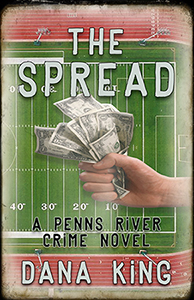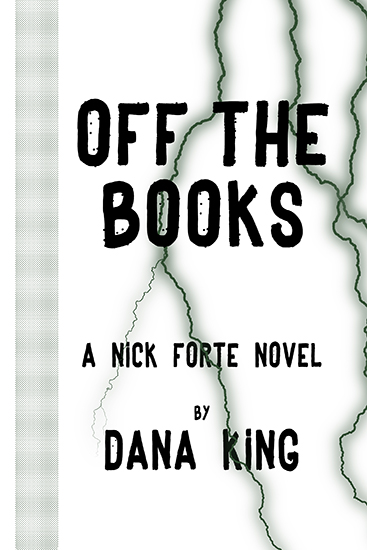In my first (and so far only) traditionally-published novel,
Grind
Joint, Chicago PI Nick Forte visits his home town of Penns River, PA.
While there he beats unconscious a man who annoyed him, saves his cousin the
cop from being kidnapped by Russian mobsters, almost provokes a brawl in a
restaurant, and kills a couple of guys. (Hey, he was only there for a week.)
Forte doesn’t have a death wish; he does have serious case of Don’t Give a
Shit.
Readers liked the character—he’s only a guest star in the
book, which is part of the Penns River series—which got me to take John
McFetridge’s advice and bring out the Nick Forte novels I’d written over
the past several years, to show how he came to be that way. (Forte, not
McFetridge. John was born smart. I should listen to him more often.) Nick’s a
small town boy who failed as a musician and got a real job teaching in the
Chicago public schools. He got tired of being the only unarmed person in the
building and the cops were hiring. A good cop, the musician in him didn’t take
to the regimentation, so he went out on his own.
In the first Forte novel, A
Small Sacrifice—which I may have mentioned once or twice was nominated
for a Shamus Award last year—Forte grapples with the violence he faces, and
frankly, doesn’t come off well. Left to his own devices, Forte would have
allowed A Small Sacrifice to tie the
record for shortest series in history. (One book, in which the hero dies.) In the
second Forte tale—The
Stuff That Dreams Are Made Of—he handles himself a little better, but
his reluctance to be more proactive continues to haunt him.
On (or about) June 11, the third Forte novel will drop.
(Available at all finer Amazon and CreateSpace outlets near you.) The Man in the Window is a story that orbits
Forte’s past as a musician, and his best friend from that life. The principal
violist of the Chicago Symphony asks Forte to find out if his wife is cheating
on him, but the violist is killed before the report clearing her can be
delivered, an apparently innocent victim of a drive-by. The next day Forte is
asked to investigate further by a close friend of the dead violist. This leads him
to finding people in places they don’t belong, with dubious reasons to be there.
When his old trumpet-playing buddy becomes dragged into the worsening
situation, Forte finds himself untethered from his natural instincts, and
discovers other, less natural inclinations that he’s better at than expected,
and comfortable.
I didn’t plan for this character arc. I meant for Forte to
be an everyman with some skills who finds himself in situations where he’d have
just enough guile and guts to get by. As the series went on, I understood at
some subconscious level there was no way for him to experience all he’d been
through and not be changed somehow. He could be repulsed by the violence, but
continuing a series down that road didn’t appeal to me, in part because that’s
not how I thought Forte would respond. Quite the opposite, Forte finds himself
drawn in by how violence can accomplish good ends, at least in his eyes. As
time goes on, he is not only less willing to walk away, he’s happy to be the
initiator.
There are at least two more Forte books on the way. Volume
Four, A Dangerous Lesson, will come
out in late 2015. That concludes Forte’s development prior to the fateful visit
home in Grind Joint. The current
work-in-progress (working title Bad
Samaritan) shows his continued evolution. Or descent, depending on your
point of view. What happens to him after that, I really don’t know.
James Ellroy, talking about the two early giants of the PI
genre, said Chandler wrote about the kind of man he wanted to be; Hammett wrote
about the kind of man he was afraid he was. That’s a little how I feel about my
two primary protagonists. Penns River cop Ben Dougherty is the kind of man I’d
like to think I am. Nick Forte is the kind of man I’m afraid I could be, under
different circumstances and stimuli. I’m sure I’ll keep him around, one way or
another.




4 comments:
There must be great satisfaction in a continuing character-in watching him over time grow or not grow. Very few writers really have their protagonist change. What we learn about him in Book One is still what we know about him in Book Five. I have always found this puzzling but I guess it is the case that makes the book rather than the evolution of a character.
As noted, I didn't plan to have him change, but the stories I kept coming up didn't seem to reasonably allow for him to be unaffected, so I had to go where I thought the situations would take him to keep the character from becoming two-dimensional in my mind, which I figured would translate to a one-dimensional character for readers.
I dunno; Nick Forte's not such a bad guy.
He tries, he really does. He needs to succeed a little more often. Well, maybe not for the purposes of the books, he doesn't.
Post a Comment